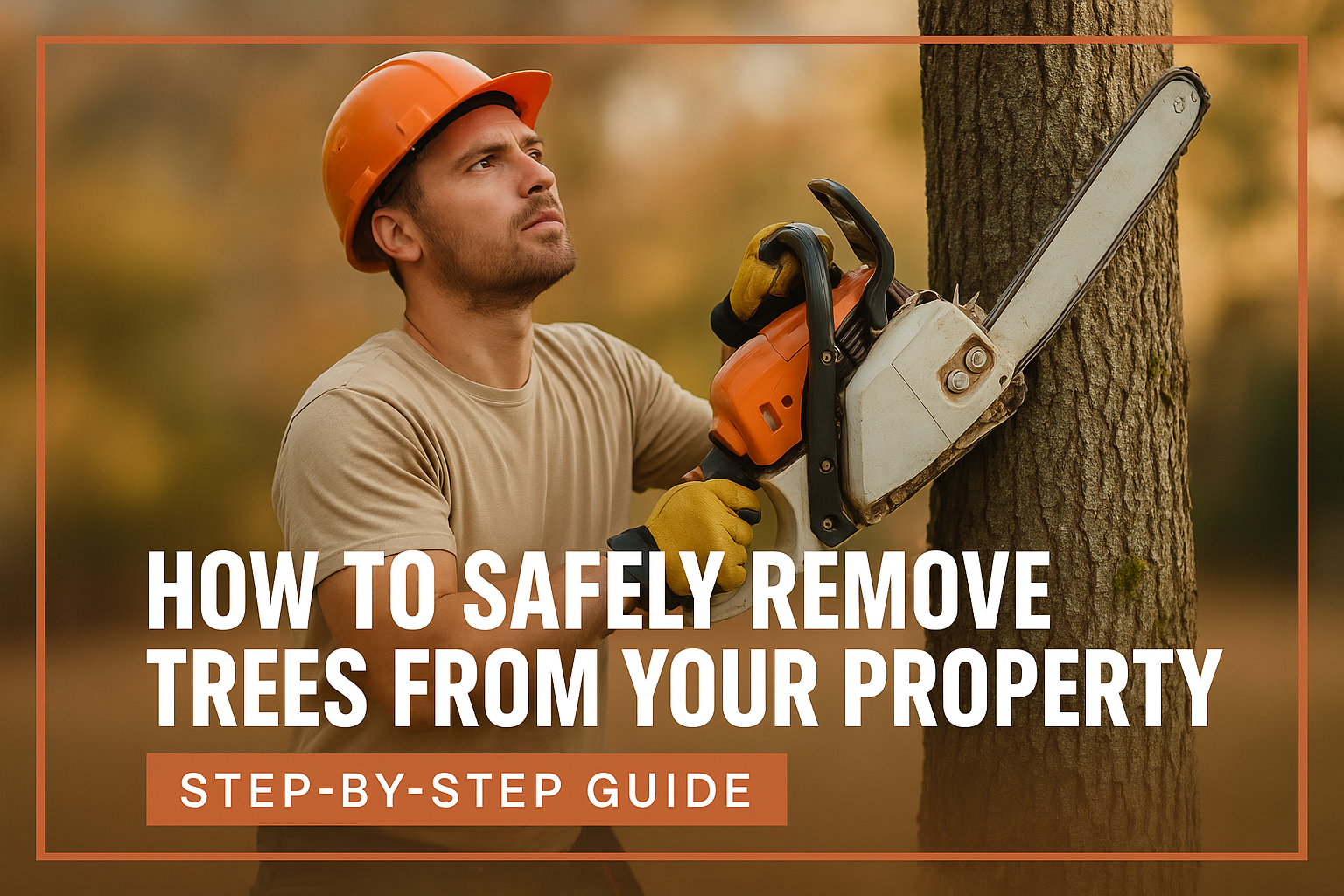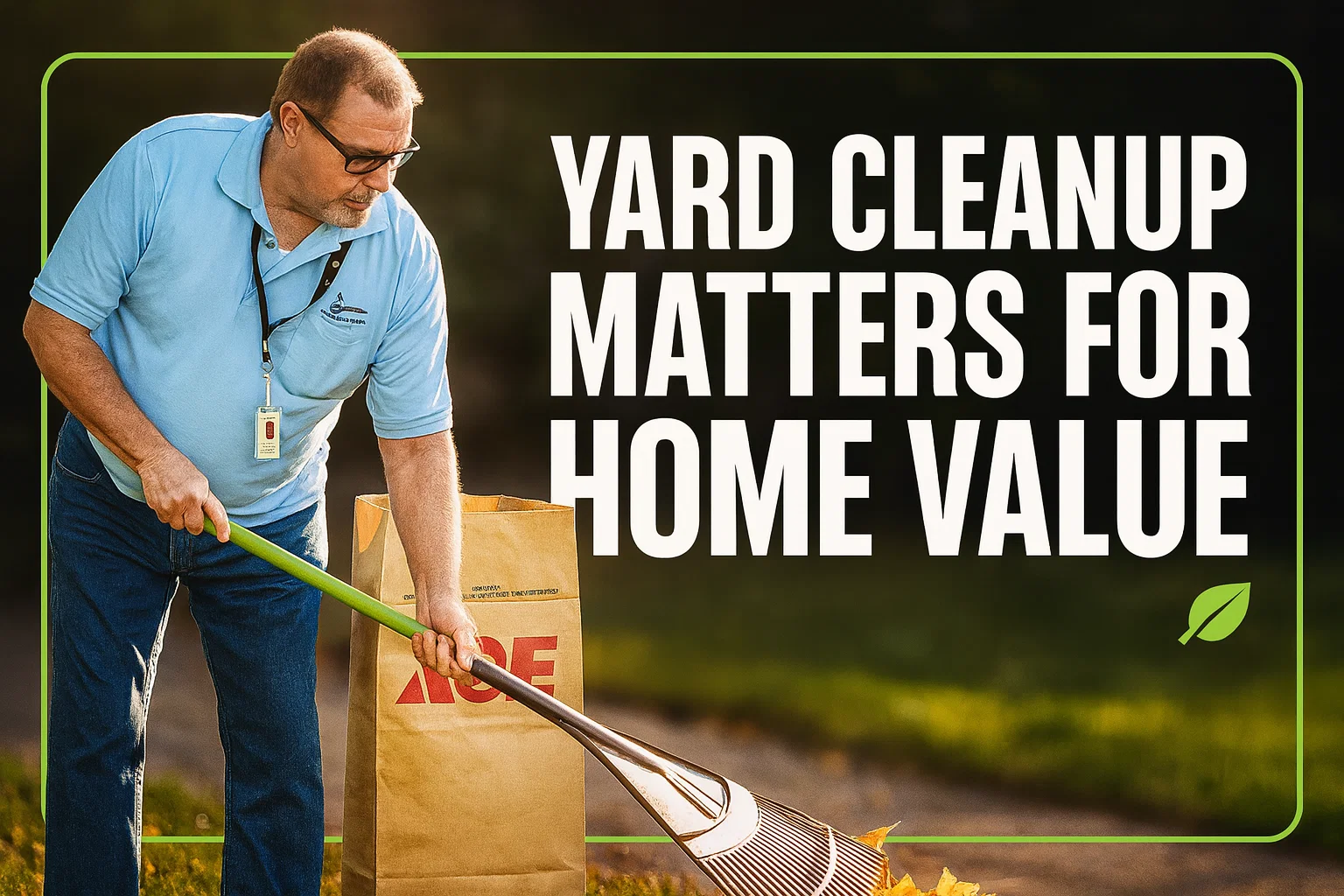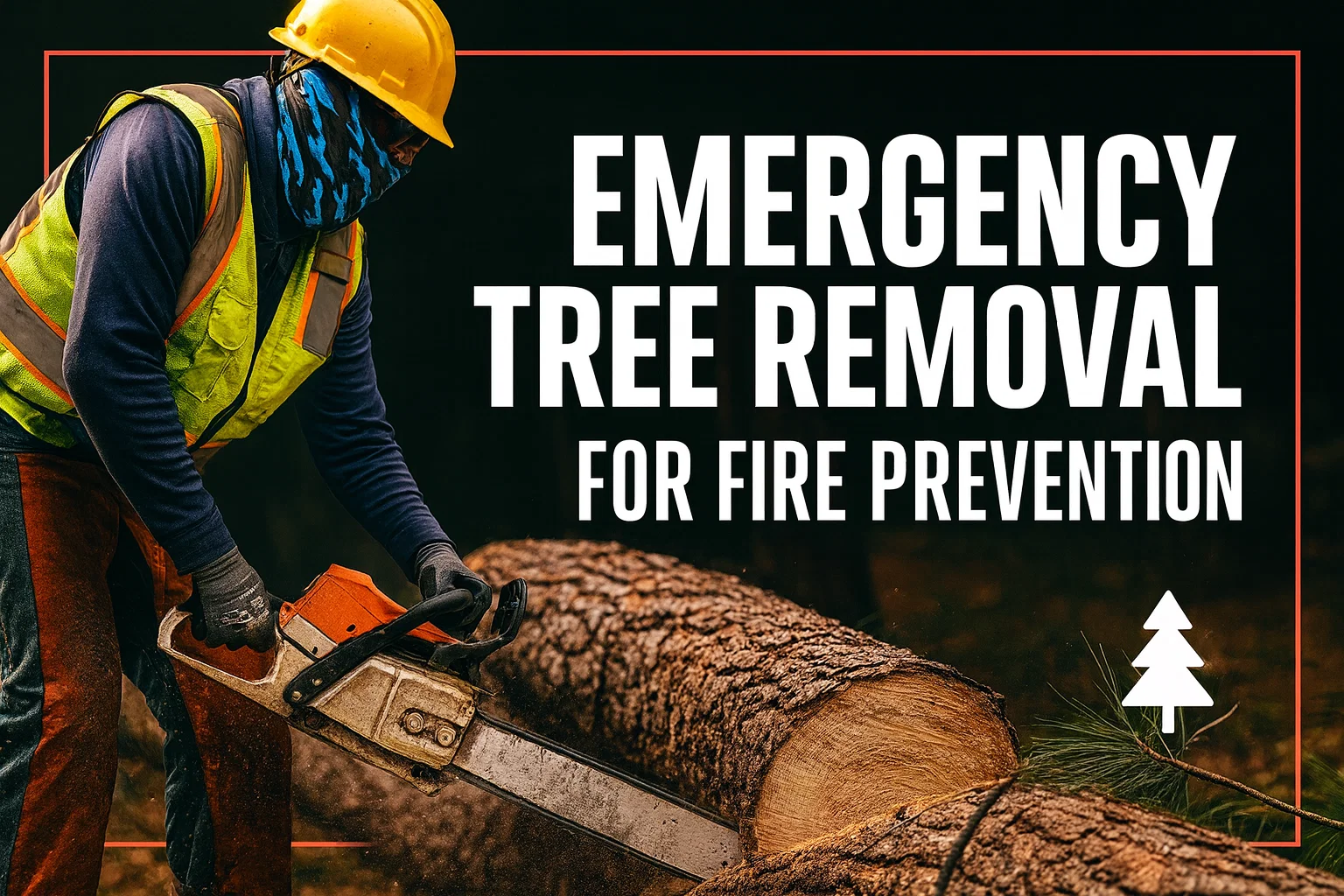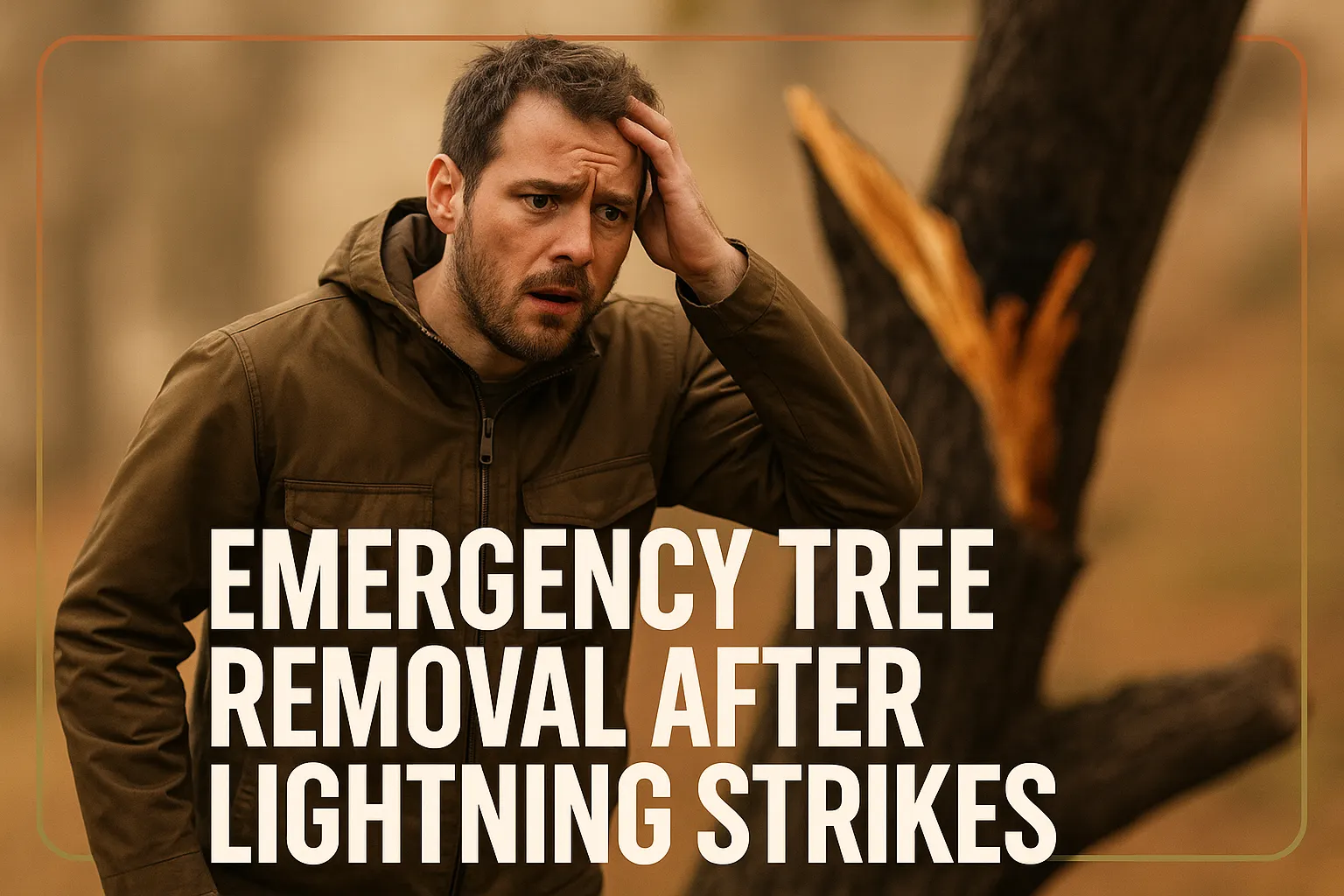Just think of a big, old tree standing so dangerously close to your house or in the way of your pretty garden. It might be a danger in the stormy weather, illness, or just overcrowding your own garden, but knowing how to safely cut trees down is a must for all house owners. The destruction of trees is not only about the aesthetic quality of things but also about the security, safety, and healthiness of the landscape. This guide will take you through all you need to know; whether you should remove a tree or not, the services of the professionals, and even how to go about the smaller trees. We shall discover how to cut down a tree with safety and efficiency, so that your property is not lost, but on the contrary, it becomes beautiful.
Why You Might Need to Remove Trees from Your Property
Common Reasons for Tree Removal
There are several reasons why you may have to cut down trees on your premises. Dead trees or diseased trees are of great danger as they become unstable and may fall at any time, thus causing destruction of your property or people passing through. Storm-damaged or structurally unstable trees must also be removed in order to avoid accidents and additional damage. Householders tend to cut down trees to beautify their gardens or to free up their building projects to get additional outdoor space. In any case, trees will be competing when they are too close together, so this may retard their growth and cause damage to the general well-being of your garden or yard.
Legal Considerations
The policy of tree removal is very different in different places. Certain local authorities will insist on the removal of trees being registered before any tree is cut, particularly when the tree is huge, aged, or an endangered type. The laws of private property can limit the destruction of some trees or force the maintenance of certain procedures. The laws protecting the environment can be enforced in case your tree belongs to the area or species that are under protection. Prechecking such regulations would make sure that you do not violate the law and receive fines or punishment. Always, It is better to ask local officials or professional tree removal companies to make sure what regulations should be observed on your property.
Assessing Whether You Need Professional Tree Removal Service
When to DIY vs. Hire Professionals
Away, small trees and those that are not disturbed by buildings and power lines can be conveniently removed by homeowners possessing the necessary tools and experience. Nonetheless, big trees close to houses or power lines and real estate should be considered very dangerous and should remain under the care of specialists. It is best not to be injured or damaged in case you are not experienced or equipped.
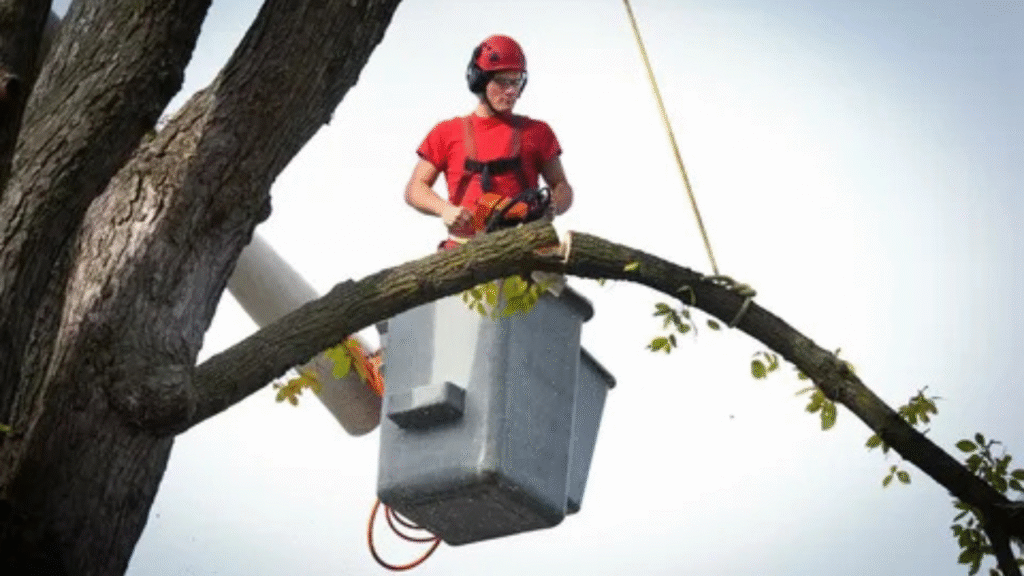
Benefits of Professional Tree Removal Services
The professionals carry training and safety equipment and equipment to reduce risks. With the insurance they provide, they save you liability and they are efficient in removing trees and stumps. Their services entail efficient cleaning that saves time and energy and gets your yard clean and secure.
Top Tree Removal Services: What to Look For
Qualities of the Best Tree Removal Companies
The best tree removal companies hold certifications such as those from the International Society of Arboriculture (ISA), ensuring expert knowledge and professionalism. They carry adequate insurance, including liability and workers’ compensation, to protect both you and their workers. Look for companies with a proven track record backed by positive customer reviews and referrals. Their equipment should be modern, well-maintained, and operated with strict safety protocols.
What the best tree removal companies have in common.
The top tree removal firms are certified by the International Society of Arboriculture (ISA), guaranteeing professionalism and expert skills. They have sufficient insurance cover, such as liability insurance and workers’ insurance, to cover you and their employees. Search firms that have a history of success, supported by good customer reviews and referrals. Their tools ought to be up-to-date, in good condition and with high safety measures.
Questions to Ask Before Hiring
Before hiring, clarify what the cost estimate includes—whether stump grinding and cleanup are part of the service. Ask about the expected timeline for completing the job and if the company handles debris hauling or just cuts and removes the tree. Also, inquire about the safety measures they will implement during the removal, such as securing the area and protecting your property.
How to Safely Remove Large Trees (Professional Methods)
Professional Tree Removal Techniques
Professionals use sectional dismantling to cut trees into manageable parts from the top down, minimizing risk. Crane-assisted removal is common for trees near buildings or in tight areas. Rigging systems help lower heavy branches and logs safely. When space allows, directional felling is employed to control the tree’s fall path with precision.
Safety Equipment and Protocols
Tree removal crews wear full personal protective equipment (PPE), including helmets, goggles, and chainsaw chaps. They establish safety perimeters around the work area to keep bystanders safe. Effective communication systems ensure coordination among crew members, and emergency procedures are in place to respond to unexpected situations swiftly.
Removing Trees from Garden: DIY Approach for Small Trees
Tools and Equipment Needed
To safely remove small trees yourself, gather the right tools. Chainsaws or hand saws are essential depending on the tree’s size. Use rope and pulleys to control the direction of the fall and maintain safety. Always wear proper safety gear such as a helmet, gloves, goggles, and sturdy boots. Shovels and other digging tools will be needed to handle the roots and stumps after cutting down the tree.
Step-by-Step Guide: How to Uproot a Tree
Start by clearing all debris from around the tree and creating a safe working area. Identify the natural direction the tree will fall to avoid nearby hazards. Begin by cutting a notch on the side facing the fall direction, about one-third into the trunk. Then make the back cut slightly higher than the notch, leaving a hinge to control the fall. Use wedges or ropes to carefully guide the tree’s descent. Once down, remove the branches, and cut the trunk into manageable sections. Finally, dig around the stump to loosen the root system and extract it for disposal.
How to Uproot a Tree: Dealing with Stumps and Roots
Stump Removal Methods
For large or stubborn stumps, hiring professional stump grinding services is often the easiest and safest option. Chemical stump removers break down wood over several weeks but require careful handling to avoid harming surrounding plants. Smaller stumps can be removed manually by digging around them and cutting roots with saws. Another natural option is to cover the stump with soil and moisture to speed decomposition, though this method takes much longer.
Root System Management
Before digging deep, always locate and avoid underground utilities to prevent accidents. To prevent unwanted regrowth, you can apply herbicides or continue digging out root shoots manually. After removal, restore soil health by adding compost or other soil amendments, ensuring your garden remains fertile and ready for new plants.
Post-Removal Tasks and Cleanup
Post-Removal Tasks and Cleanup
After removing a tree, cleanup is essential to restore your yard and protect nearby property. Tree sap can unintentionally get on vehicles parked nearby during cutting or removal. To safely remove sap from your car, use gentle cleaners such as rubbing alcohol or commercial sap removers designed for automotive use. Apply the solvent carefully and rub gently to avoid damaging your vehicle’s paint. Once the sap is removed, it’s a good idea to wash and wax the car to protect the paint surface from future damage.
Cost Considerations for Tree Removal
Professional tree removal costs vary widely depending on several key factors. The size of the tree is the biggest driver, with small trees (under 30 feet) typically costing between $150 and $700, medium trees (30–60 feet) ranging from $700 to $1,200, and large trees (60 feet and above) costing $1,000 to over $2,000. Location matters too; trees in difficult-to-access areas or near power lines increase the price due to added risk and equipment needs. Additional expenses often include stump grinding, debris hauling, and emergency removal services. To save on costs, compare multiple quotes, schedule removals during off-peak seasons, or handle removal of small trees yourself if safe.
Safety Tips for Removing a Tree
Safety should always be your top priority during tree removal. Never work alone—always have a spotter or helper present. Avoid tree removal during windy or stormy weather conditions to reduce hazards. Thoroughly inspect all equipment before use to ensure it is functioning properly. Maintain a safe distance from electrical lines, and call utility companies to handle power issues if needed. Know your physical and skill limits: if a job feels too risky, stop immediately and hire a professional. Lastly, keep a first aid kit nearby and be familiar with emergency contact protocols in case of injury.
Conclusion
Removing a tree can be necessary for safety, property enhancement, or health reasons. Whether addressing a dead tree, clearing space, or tackling a storm-damaged giant, prioritizing safe tree removal practices is critical. While small trees can be managed carefully with DIY methods, large or risky trees demand professional expertise to protect you, your family, and your property. Always evaluate your situation honestly, follow safety guidelines, and if in doubt, hire certified professionals like Alexa Tree Services. Take action today to keep your home safe and your yard beautiful—safely remove tree hazards before they become problems.
For safe and professional tree removal, trust Alexa Tree Services. Visit alexatreeservice.com or call today for a free quote and expert help with all your tree needs.
FAQ’s
A: Check local laws and permits first. Some trees are protected and require special authorization.
A: If the tree is large, close to structures, near power lines, or if you lack experience and equipment, hiring professionals is safest.
A: Costs vary widely but typically range from $200 to $1,500 or more depending on size and complexity.
A: Use rubbing alcohol or commercial sap removers gently, then wash and wax your car to protect the paint.
A: Ask about certifications, insurance, included services (stump grinding, cleanup), timelines, and safety protocols.

